A heart rate monitor is a wearable device that measures how fast your heart is beating. These devices are great for monitoring your workout intensity, your recovery, and even the quality of your sleep and overall long-term health outlook.
Heart rate monitors got their start with sports like cycling, swimming, and running, where using a good heart rate monitor allows athletes to complete workouts at a tightly controlled intensity for maximum improvement with minimal risk of overtraining or injury.
The big picture
Heart rate monitors can help you get a better workout, or track your energy expenditure and cardiovascular fitness throughout the day. For most users, the best balance between accuracy, usability, and features is going to be a high-quality wrist-worn heart rate monitor.
Our research team found that the Fitbit Charge 3 is the best heart rate monitor on the market right now, thanks to its accuracy, broad range of activity tracking features, and its excellent battery life.
Rankings
1. Fitbit Charge 3
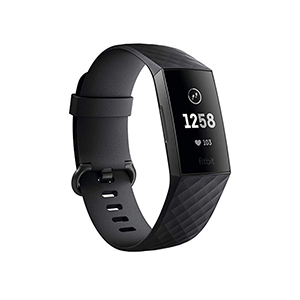
Click here for the lowest price on Amazon
Fitbit has been the king of activity trackers, going back to their first device, which only counted steps. Fitbit has come a long way since then: the Fitbit Charge 3, our top pick, features round-the-clock heart rate monitoring, 15 different exercise modes, and comes with automatic activity tracking as well as sleep analysis.
Why we like it: Fitbit’s activity tracking is unparalleled, and for a wrist-worn device, the heart rate accuracy is surprisingly good. The Fitbit Charge 3 is also one of the few devices that has been scientifically validated against research-grade devices. Finally, the seven-day battery life means you don’t have to worry about constantly charging your heart rate monitor.
Flaws: Though the Fitbit Charge 3 has great cross-platform support, serious athletes may miss the GPS tracking that’s offered by more sport-oriented brands like Garmin and Polar.
2. Garmin Vivoactive 3
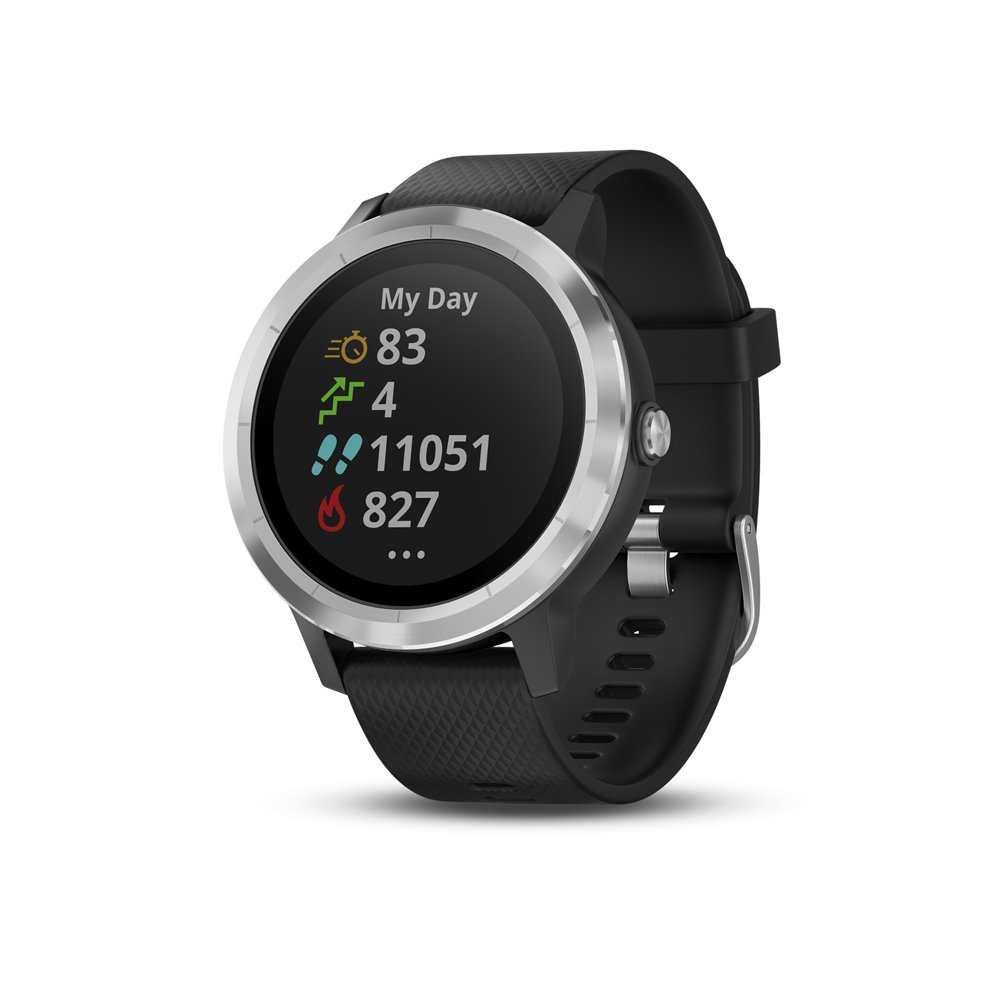
Click here for the lowest price on Amazon
Garmin’s Vivoactive 3 is an everyday smartwatch that packs serious sports capabilities and solid heart rate tracking. It’s got smartwatch exclusives like contact payment and broader app support than most heart rate monitors, while retaining all of the advantages of Garmin’s industry-leading GPS.
Why we like it: If you want all the advantages of the latest smartwatch technology but don’t want to sacrifice any of the performance data you expect from a heart rate monitor and sports watch, Garmin’s Vivoactive 3 is the way to go. There are very few features available anywhere on the market that aren’t available on this jack-of-all-trades.
Flaws: One consequence of the broad range of features in the Garmin Vivoactive 3 is that it’s hard to do all of them well at the same time. As with many other wrist worn devices, the heart rate tracking is good, but not great. The smartwatch features aren’t quite as slick as what you’d get on a dedicated platform like the Apple Watch, and while the GPS is world-caliber, it does suck up a lot of battery life.
3. Apple Watch Series 5
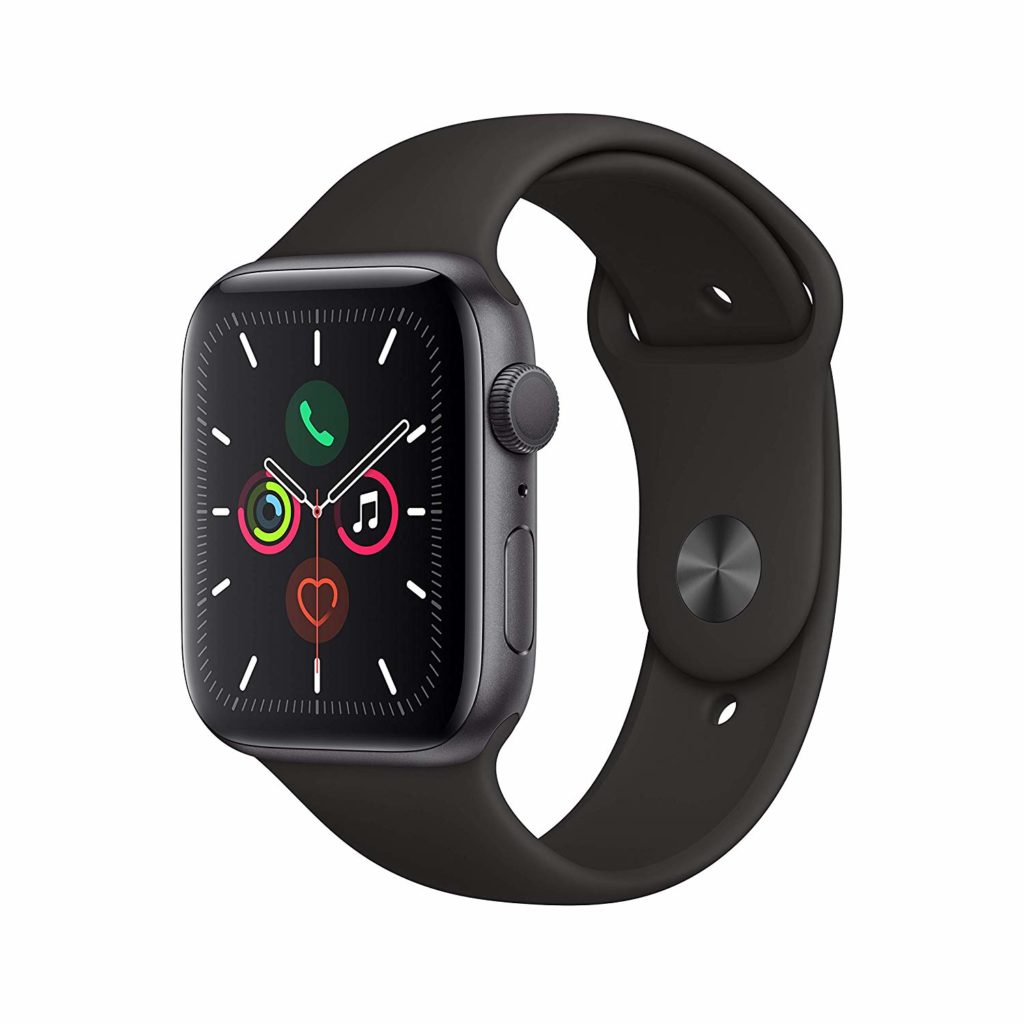
Click here for the lowest price on Amazon
When it comes to a pure smartwatch, nobody can compete with Apple right now. The Apple watch has a full suite of apps to support just about any function you could imagine, from Apple Pay to push notifications and even recording voice memos—right on your watch. To top it off, the Apple Watch is very competitive heart rate monitor, and offers features no other tracker has, like its electrocardiogram.
Why we like it: The heart rate monitoring on the Apple Watch is surprisingly good—often outperforming other devices that are typically considered more in-tune with sports-specific activity tracking.
It almost goes without saying that the features offered by the Apple Watch are unparalleled, but one that’s worth pointing out is the integration of GPS tracking, which supports running, walking, or cycling for up to five hours. Plus, if you are using the GPS, you can even get turn by turn directions.
Flaws: For starters, anyone without an iPhone is out of luck—the Apple Watch is useless if you don’t also have an iPhone to pair it with. This significantly reduces the number of people who can viably use the Apple Watch as a heart rate monitor.
While all the features and the beautiful screen are great, they also gobble up a tremendous amount of battery life, especially when you are using the GPS—other GPS-enabled heart rate monitors offer more than twice the battery life of the Apple Watch for activities like running or cycling.
4. Garmin Vivosmart 4
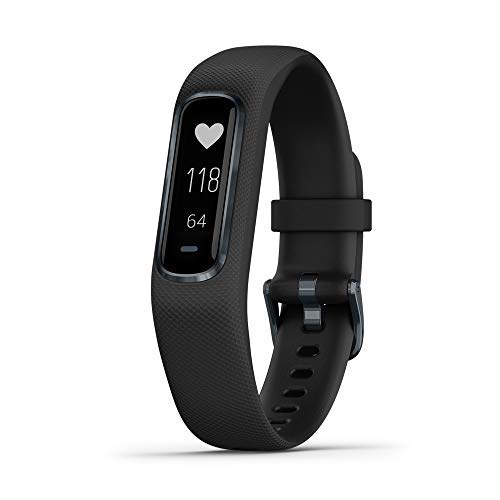
Click here for the lowest price on Amazon
Do you wish you had a Fitbit-sized heart rate monitor that also had GPS and smartphone notifications? Look no further than the Garmin Vivosmart 4. This slimmed down heart rate monitor counts your steps, tracks your activity, monitors your heart rate, and to top it all off, has Garmins’ industry-leading GPS technology built in.
Why we like it: Often you have to make a tradeoff between a slim, efficient heart rate monitor and one with all the features you want. Garmin Vivosmart 4 offers a way to have your cake and eat it too. The battery life is great, and it’s comfortable for everything from yoga to swimming to everyday wear.
Flaws: Stats nerds may not like the lack of access to the full suite of data, features, and apps available on other Garmin devices, and some users find that the smaller optical sensor struggles to pick up heart rate accurately during extremely vigorous exercise.
5. Polar H10 Heart Rate Monitor
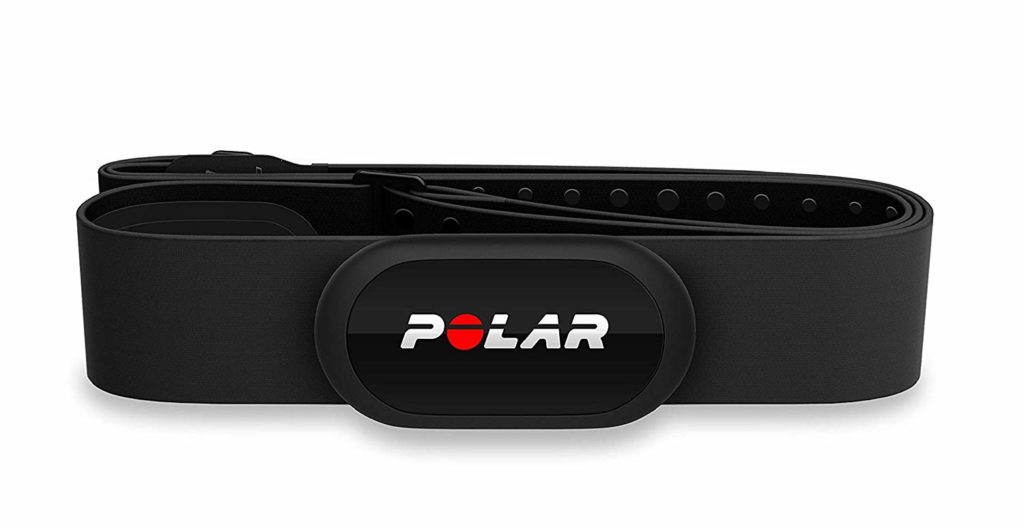
Click here for the lowest price on Amazon
For serious athletes who need super-accurate heart rate monitoring, the Polar H10 offers unparalleled accuracy. Instead of an optical sensor, like most heart rate monitors use, the Polar H10 uses an electrical sensor to directly sense your heartbeat.
Why we like it: When it comes to accuracy, no other device can compare to the Polar H10. Polar has been an industry leader when it comes to heart rate monitoring for a long time, and as a result, this is the best device on the market right now for serious athletes who need to know their heart rate during workouts as accurately as possible.
Flaws: The Polar H10 needs to be paired with another device (like a watch or an ANT+ equipped cardio machine) to broadcast your heart rate. You can, however, pair it to your smartphone via Bluetooth, and the H10 even plays well with other devices in our rankings, like the Apple Watch. The Polar H10 is great for working out, but it’s not well suited for everyday wear—chest straps get uncomfortable pretty quickly after a workout.
6. Scosche Rhythm +
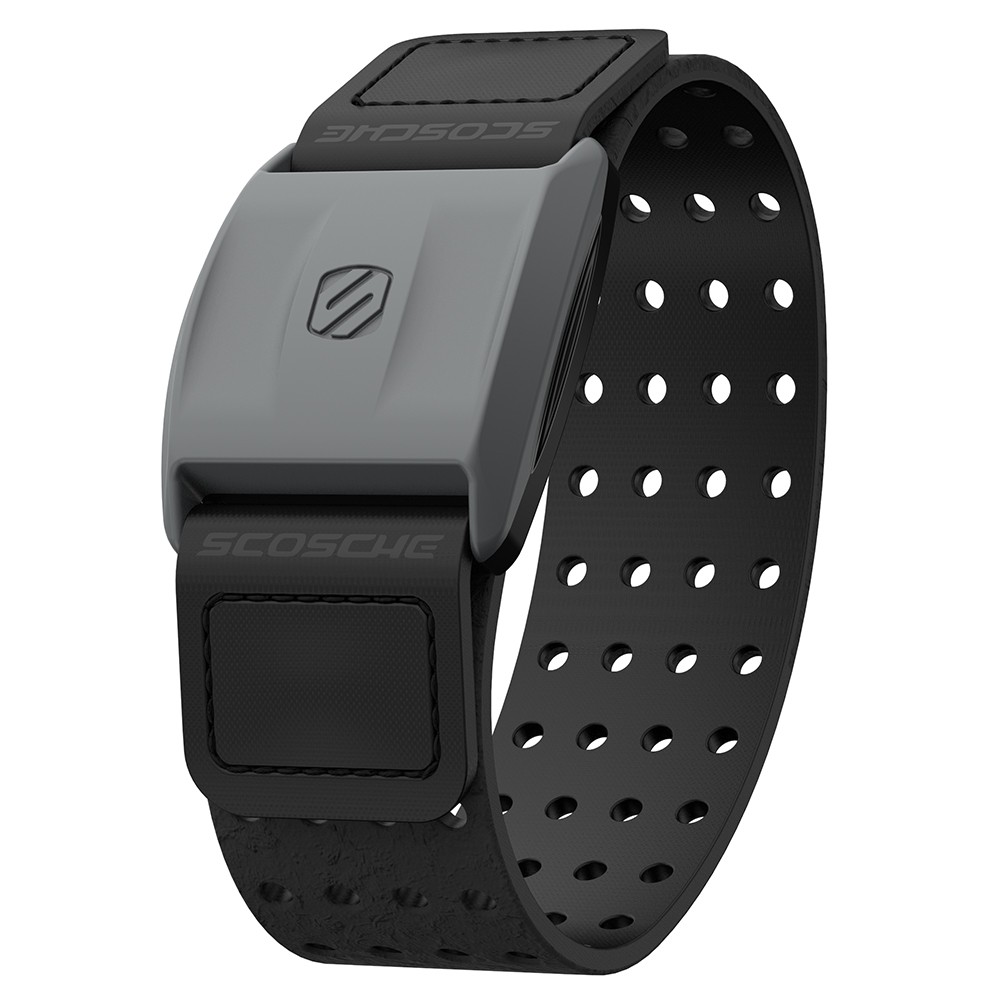
Click here for the lowest price on Amazon
The Scosche Rhythm + was the breakout device for Scosche, and is still a great option. Many fitness enthusiasts believe this earlier device is more reliable than the Scosche Rhythm 24, which came out more recently and has longer battery life, but also has occasional accuracy and connectivity issues.
Why we like it: The Scosche Rhythm + is the best device on the market if you use a Peloton bike or go to a place like Orange Theory Fitness for heart-rate based workouts, as it can “talk” to exercise equipment using the ANT+ protocol (as well as Bluetooth, which helps it sync to your phone).
Flaws: Like the Rhythm 24, the Scosche Rhythm + struggles with sprinting or other activities that involve extremely vigorous arm movements. It can also run into connectivity issues at times, and isn’t the most comfortable device to wear when you aren’t working out.
7. Wahoo TICKR X

Click here for the lowest price on Amazon
The Wahoo TICKR X is a chest strap heart rate monitor that, like the Polar H10, has to be paired with another device to read out your heart rate. It does, however, offer an accurate heart rate reading since it’s mounted so close to your heart.
Why we like it: The accuracy is great, so the Wahoo TICKR X is a great choice if you need a heart rate monitor for a Peloton bike, Orange Theory, or other cardio machine based routines that specify heart rate or heart rate zone workouts.
It’s also great if you already run or ride with your phone, since it can connect via Bluetooth. Even if you swim, the TICKR X has onboard memory, so even though the wireless connection is spotty underwater, you won’t lose your workout stats.
Flaws: The Wahoo TICKR isn’t quite as accurate as the Polar H10, and it shares the primary disadvantage of all chest strap heart rate monitors: it’s not very comfortable after the first hour or so of wear, and it definitely is not well-suited for all-day use.
8. Scosche Rhythm 24
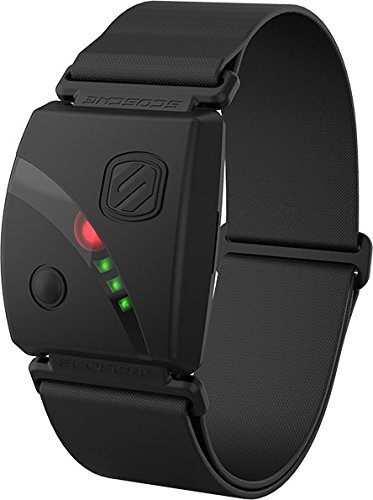
Click here for the lowest price on Amazon
Scoche takes a different tack than most of the heart rate monitoring market, opting for an arm band as opposed to a chest strap or a wrist-worn sensor. The Rhythm 24 works well for some applications, particularly cycling, but comes up short for others.
Why we like it: The Scosche Rhythm 24 is the follow-up to the incredibly popular Scosche +, and promises improved heart rate accuracy, longer battery life, and more features. It works great for cycling, capturing heart rate data quite accurately for an optical sensor
Flaws: The armband design for the Rhythm 24 improves accuracy for cycling and running, but this device still suffers when it comes to intense sprinting or high intensity interval training. For those applications, a chest strap would be a better choice. The armband is not quite as comfortable as a wrist strap, so it’s not the best for all-day use.
9. Garmin HRM-Run
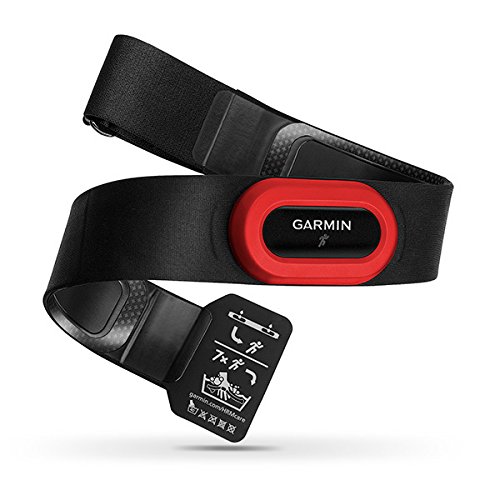
Click here for the lowest price on Amazon
This chest strap heart rate monitor is specifically designed for runners, and integrates best with Garmin’s ecosystem of devices and apps. In exchange for this more limited usability, you get some stats that aren’t available on any other device.
Why we like it: If you want to analyze stats beyond just your heart rate during your running workouts, the Garmin HRM-Run is the way to go. When paired with a compatible Garmin GPS watch, you’ll get detailed stats on heart rate, heart rate zones, caloric expenditure, and Garmin’s “Run Dynamics” suite of statistics, which includes data like vertical oscillation and ground contact time.
Flaws: The limited compatibility of the Garmin HRM-Run means it’s only a good choice for a pretty specific niche of people. The Run Dynamics data are great, but unless you’re an expert, it’s not always clear what you can actually do with this data.
10. Polar A370
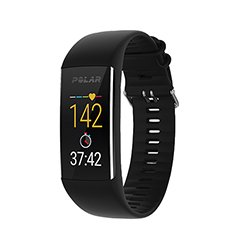
Click here for the lowest price on Amazon
The Polar A370 is Polar’s take on a wrist-worn activity tracker that also monitors your heart rate around the clock. The features are solid, but don’t quite measure up to what’s available from other manufacturers.
Why we like it: Polar offers another option if wrist worn activity trackers from Fitbit or Garmin that also measure heart rate isn’t your cup of tea. It checks all the boxes when it comes to features you’d expect, like push notifications and sleep tracking, but doesn’t really offer anything innovative.
Flaws: Polar has a great reputation when it comes to chest strap heart rate monitors, so it’s surprising to see so many complaints when it comes to the battery life and software functionality of the Polar A370. It’s decidedly below the admittedly high standards set by other devices. Additionally, the wrist strap isn’t particularly strong.
Who should buy a heart rate monitor?
Thanks to an enormous surge in research on heart rate, health, and fitness, you don’t need to be a top level athlete to benefit from a heart rate monitor. Previously, heart rate monitors were big, bulky, and awkward to use.
Now, they can instantly transmit data to your smartphone via Bluetooth, which makes it incredibly easy to check your workout stats and your progress towards your long term health goals, whether that’s an increase in overall daily energy expenditure or a decrease in your resting heart rate.
Many training programs for runners, Nordic skiers, cyclists, swimmers, and triathletes are based on heart rate percentages or heart rate zones. If you want to follow such a program, or even just incorporate workouts from these kinds of programs into your training program, a heart rate monitor is essential.
Another group of people who can immensely benefit from a heart rate monitor are people trying to lose weight. Heart rate monitors are the best commercially available device for accurately estimating your daily caloric expenditure.
A heart rate monitor can take the guesswork out of your energy expenditure by estimating your body’s metabolic rate at rest, during exercise, and throughout the day. Often, heart rate monitoring devices that are well-suited for round-the-clock heart rate monitoring are also integrated with activity tracking features, like those found in Fitbits, which makes them even better for tracking your physical activity.
Finally, if you are interested in your long-term health, modern heart rate monitors offer two sophisticated heart rate metrics that are good predictors of long-term health: resting heart rate and heart rate variability.
Resting heart rate is determined in part by genetics, and in part by your aerobic fitness and overall health. People with a high resting heart rate are at a greater risk for all sorts of health conditions, including heart disease and cancer (1). As you improve your physical fitness, your resting heart rate should decrease (2).
Resting heart rate is a good metric of overall fitness because it, like long-term health, is slow-moving—it takes several months to shift your resting heart rate, which follows from the fact that making substantial changes in your physical health also takes at least a few months.
The intuition behind resting heart rate and health is simple: the stronger your heart is, the more blood that it can move per beat. It’s easy to see why a stronger heart helps you live longer.
Heart rate variability is a newer metric, and is a little less intuitive. With heart rate variability, more is better. Here’s where heart rate variability comes from: if you are sitting down and your average heart rate is 60 beats per minute, your heart is not beating exactly once per second.
It skips around a bit, perhaps taking 1.05 seconds between one beat, then 0.95 seconds between the next. Heart rate variability quantifies how much your heart rate skips around when it’s at a constant average heart rate. Researchers first noticed that heart rate variability was greater in young adults, and lower in older adults.
At the same time, they also noted profoundly low heart rate variability in people who had heart failure, or who had undergone heart transplants. Low heart rate variability was later found to be associated with a shorter lifespan (4), and some researchers also think that heart rate variability can be used to monitor overtraining in athletes.
While heart rate variability is less well-understood than simpler metrics like instantaneous heart rate, resting heart rate, or daily caloric expenditure, people into the latest on health and performance science won’t want to miss out on it.
How we ranked
We formulated our rankings based on a balance among features offered, heart rate accuracy, and usability. We carefully compared devices from the three dominant styles of heart rate monitor: wrist-worn optical sensors, chest straps, and arm bands.
For most people, wrist-worn heart rate monitors offer the best balance of features and accuracy, so these dominated our rankings. However, serious athletes may want to opt for a chest strap or an arm band to track their workouts with precision, so we made sure to include a few of the best and most accurate chest and wrist straps as well.
To evaluate accuracy, we turned to the scientific literature when possible. Some of the most popular commercial heart rate devices have been rigorously compared to research-grade heart rate equipment, so these peer-reviewed papers offer the best validation of the accuracy of a device.
When scientific research wasn’t available, we turned to independent verification by amateur athletes, which usually involves comparing new devices to another one that’s known to be accurate (like a chest strap).
For features, we looked first for the core ones: maximum heart rate estimation, resting heart rate, energy expenditure, and heart rate variability. Then, we looked for additional metrics that are nice to have, like time spent in heart rate zones and estimates of your VO2 max.
We excluded anything that required a monthly subscription, which ruled out the popular Whoop band—while it had some nice features, it’s hard to justify getting hooked on a membership fee, especially if all you want are some basic metrics like your daily caloric expenditure.
Other features that were not essential but added to the value of a device included step counts and activity tracking, or activity-specific metrics like the Run Dynamics data available on Garmin chest straps. While these features aren’t necessary for everyone, subsets of users will like these perks.
As for usability, we investigated how comfortable and wearable the device was, especially for wrist-worn heart rate monitors that are designed to be worn all day long, not just for workouts. A device that’s too bulky or has an uncomfortable wrist strap is no good for long term use.
We also looked at compatibility: some heart rate monitors, like the one integrated into the Apple Watch, are only compatible with Apple smartphones. Likewise, many of Garmin’s devices, which offer lots of features for a pretty impressively low cost, often function best in the Garmin ecosystem. The best-rated devices were those that offer cross-platform support and web-based storage for your heart rate data.
We also examined reliability by examining user reports for abnormally high rates of devices that were dead on arrival, or failed after only a few weeks of use. This ruled out many of the “imitation” devices that mimic the top of the line brands at lower costs—while this sounds like a good deal, these devices tend to have poor lifetimes.
Finally, we calculated our final rankings by weighing the accuracy, features, and usability of the remaining devices. Our rankings represent the best heart rate monitors on the market right now.
Benefits
Each of the three different styles of heart rate monitor has distinct advantages and disadvantages. Broadly speaking, there are three categories of heart rate monitors.
The most accurate of these three categories is chest straps, which are worn around your torso and measure the electrical impulse that is emitted by the nerves that control your heartbeat.
Chest straps are excellent for measuring heart rate across many different sports, and are great if you need highly accurate resolution of your heart rate so you can follow workout plans properly.
The downside of chest-worn heart rate monitors is that they aren’t super comfortable, and you definitely aren’t going to want to wear one around the clock. The second and likely the most popular category of heart rate monitor is a wrist-worn optical sensor, often integrated into a smart watch or an activity tracker.
Wrist-worn optical heart rate monitors are super easy to use, and work well even for round-the-clock heart rate monitoring, if you are interested in your resting heart rate while you sleep, your heart rate variability, or your daily energy expenditure, a wrist-worn optical sensor is the way to go. A good model will still be fairly accurate for most sports, but can’t measure up to the accuracy of a chest strap.
Finally, an emerging new category of heart rate monitor is the armband, which is worn above your elbow. Though rare, these kinds of devices offer a good middle ground between chest straps and wrist-worn optical sensors: they’re more versatile and comfortable than a chest strap, but are much more accurate than a wrist-worn sensor.
Chest straps are most accurate, but the best wrist-worn heart rate sensors can come close. Since chest straps measure your heart rate using an electrical sensor, they are the gold standard when it comes to heart rate monitoring.
However, this technology only works when a sensor is mounted close to your heart—it won’t work at the wrist. Instead, wrist-worn devices have to use an optical sensor, which identifies heartbeats based on the influx of new, oxygenated blood in your veins every time your heart beats.
Optical sensors can get disrupted by movement, which is particularly bad when the sensor is mounted at your wrist. Nevertheless, given the popularity of optical heart rate sensors, manufacturers have been working extremely hard to improve the accuracy of wrist-mounted heart rate monitors.
In many cases, the accuracy compared to a chest strap is pretty impressive: One study published in 2017 reported that the Apple Watch was 92% as accurate as a research-grade chest strap in running and elliptical use, while devices from Garmin and Fitbit performed less accurately (4). Even in the few years that have elapsed since the publication of this study, accuracy in many of these devices has improved quite a bit.
FAQ
Q: What is a good heart rate for my age?
A: According to research published in the European Heart Journal, the “best” resting heart rate (meaning the one associated with the best long-term health) is 64 or below. However, long term health is pretty similar for resting heart rates up to the low 70s.
It’s not until resting heart rate limbs to the mid or high-70s that major differences in lifespan start to show up. Nevertheless, the people with the highest resting heart rates (in the 80s or above) had seriously worse long-term health prognosis (5).
Q: Are heart rate monitors expensive?
A: Heart rate monitors have come down significantly in price recently; a high quality chest strap is well under $100, and good wrist-worn monitors can be anywhere from $80 to $200 or more, depending on what additional features are present.
Q: What are the advantages of a chest strap heart rate monitor?
A: Chest strap monitors are by far the most accurate way to assess heart rate. A good chest strap, like the ones in our rankings, give essentially identical results to medical-grade heart rate monitors.
That means chest strap heart rate monitors are well-suited for athletes who need precise heart rate monitoring. The downsides to chest straps are that they can get uncomfortable, and aren’t well-suited for use all day long.
Q: How should you use a heart rate monitor?
A: Both chest worn and wrist-worn heart rate monitors work best when they are secured snugly against your skin. A fit that’s too loose will make it hard to get an accurate reading on your heart rate.
Any good heart rate monitor will be waterproof, so give it a rinse with cool, clean water after your workout to remove any sweat or skin oils that might interfere with your sensor.
Q: How does a heart rate monitor work?
A: Heart rate monitors use one of two methods to detect your heart beating. Chest straps use electrical sensors which can record the electrical impulse sent by your nervous system to contract the muscles of your heart. These are extremely accurate, but can only be sensed very close to your heart.
Other heart rate monitors use an optical sensor. These devices use LED lights (usually green ones) to shine light onto your skin, then use a light sensitive sensor to detect how much light has been absorbed.
The hemoglobin cells in your blood have the convenient property of changing their light absorption capabilities depending on whether or not they are carrying oxygen. Since the oxygen content of your blood ebbs and flows up and down every time your heart beats, this up-and-down cycle of light absorption corresponds quite nicely to your heart rate.
The downside of optical sensors is that their accuracy suffers when your arms are moving (like in running, swimming, or many other forms of cardio). However, recent advances in sensor technology help compensate for these movement artifacts, so optical sensors today are much more accurate than those even five years ago.
Q: What is ANT+ on a heart rate monitor?
A: Heart rate monitors typically use two different wireless protocols to broadcast their data. Bluetooth is familiar to just about everyone—that’s how your heart rate monitor pairs with your smartphone, for example. ANT+ is technically a newer protocol, but its usage is generally limited to fitness devices.
Not all heart rate monitors have ANT+, but those that do can “talk” to any other device with ANT+ connectivity. This might include power meters on your bike, a cardio machine at the gym, or the watch that corresponds to your chest strap. You only really need ANT+ if you plan on using your heart rate monitor for applications like OrangeTheory Fitness or connecting to cardio machines at the gym.
Recap
Heart rate monitors are great for a wide variety of people. If you want to track your heart rate during intense workouts to get the maximum training effect, opt for a chest strap heart rate monitor, or one of the more accurate sport-oriented wrist worn optical heart rate monitors.
In contrast, if you want round the clock heart rate monitoring so you can estimate your daily energy expenditure, your resting heart rate, or your heart rate variability, a wrist-worn device is definitely the way to go.
With modern technology and recent advances in using heart rate for training, recovery, and monitoring of long-term health, everyone from elite athletes to people who are overweight and trying to drop a few pounds can take advantage of the data offered by a high quality heart rate monitor.
For FitBug’s #1 heart rate monitor recommendation, click here.